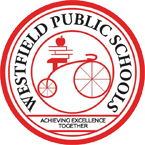This month’s survey on how to spend $10.78 million in federal pandemic-related grants “pretty much confirmed what we were thinking about how to use the funding,” School Superintendent Stefan Czaporowski said this week.
“But we will dig deeper into the survey results next week to make adjustments as needed,” he added.
Westfield schools have been promised $10,784,275 from the third round of Elementary and Secondary School Emergency Relief grants, part of the federal American Rescue Plan Act. Although the funds have been reserved for Westfield, the district still must apply for the ESSER III grant. The application is due Friday, Oct. 1.
Czaporowski said the district is sill working on its spending plan for the ESSER III funds.
“So far, we have extensive HVAC work planned at the Middle and Intermediate schools. We are also going to continue to operate the Westfield Virtual School and maintain the additional school adjustment counselors that were hired this year to help meet the social and emotional needs of our students,” he said.
The stated purpose of the ESSER III relief funds is to allow districts and schools to safely reopen and sustain safe operations over the next three years. Eligible categories for spending include the academic, social, emotional and mental health needs of all students, and particularly those disproportionately impacted by the COVID-19 pandemic.
One requirement of the funding is that each district set aside 20 percent of the allocation to address lost instructional time. Other allowable uses of the funds include school facility repairs and improvements (specifically related to reducing virus transmission and exposure), supplies to sanitize and clean buildings, and educational technology.
The top three spending priorities among the survey responses received by Sept. 22 were improvements to facilities to improve safety (73.8 percent), student social, emotional and mental well-being (73 percent), and additional staff to counter learning loss (65.4 percent); followed by continued emphasis on technology equipment (31.6 percent), additional instruction time for students (26 percent) and additional activities to support special populations (25.7 percent).

